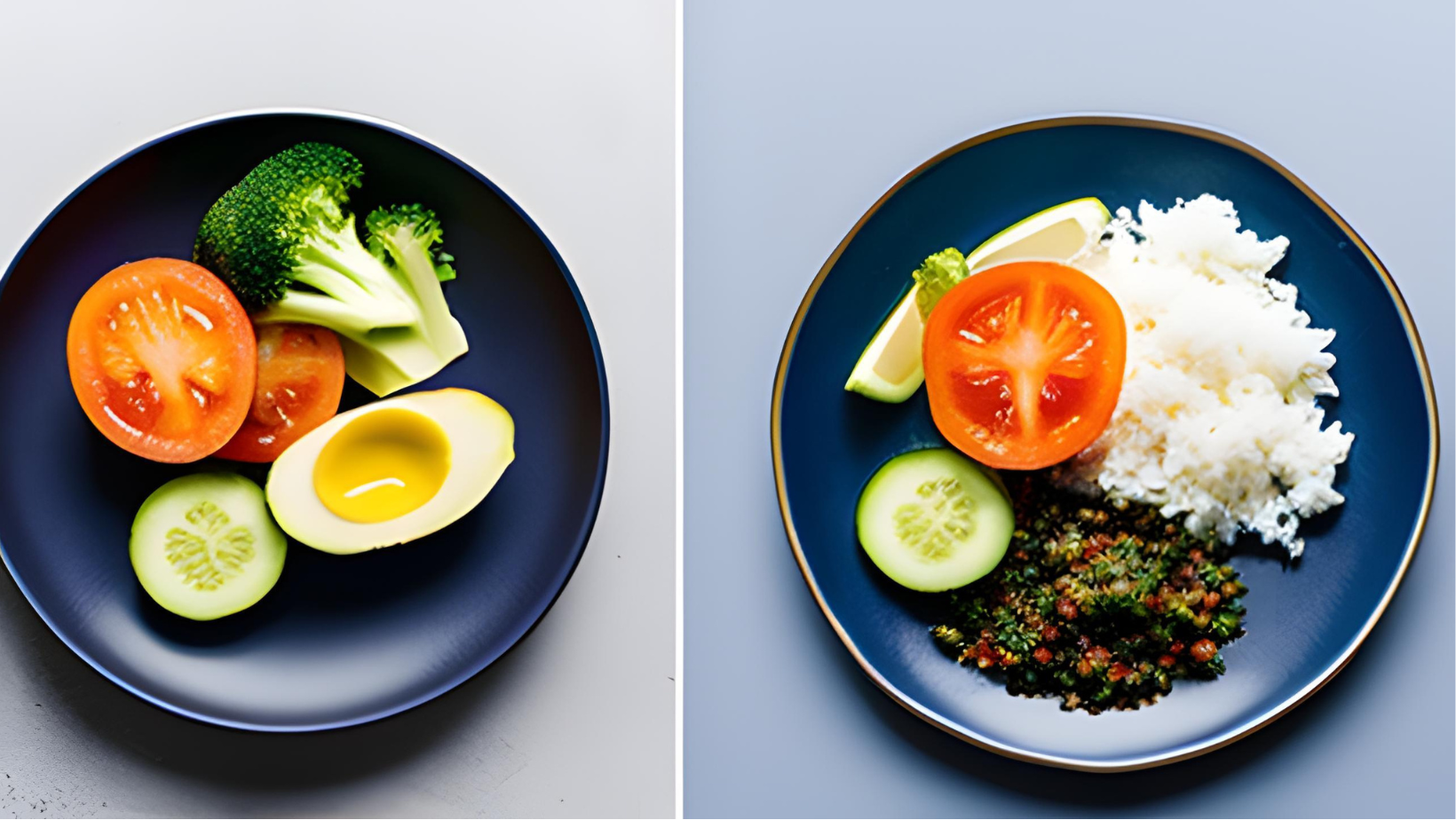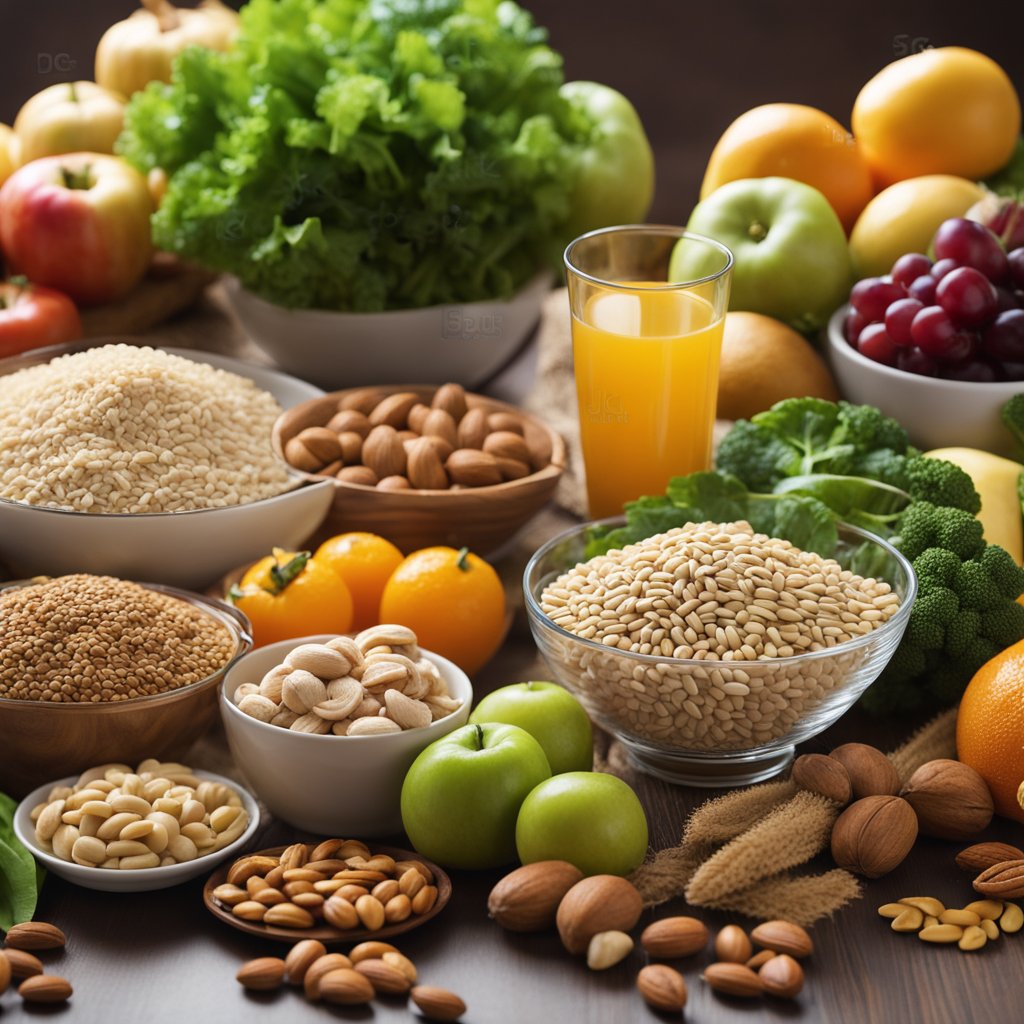Contents
Portion control is a crucial aspect of maintaining a healthy diet. Eating too much can lead to weight gain, which in turn can increase the risk of various health problems such as heart disease, diabetes, and high blood pressure. However, it can be challenging to know how much food is the right amount, especially when eating out or cooking at home.
One effective technique for portion control is using smaller plates and bowls. Studies have shown that people tend to eat less when their food is served on smaller plates. This is because the brain perceives a full plate as a full meal, regardless of the actual amount of food on it. Using smaller plates and bowls can help trick the brain into thinking that a smaller portion is enough, leading to reduced calorie intake without feeling deprived.
Another technique is measuring food portions using common household items. For example, a serving of meat should be about the size of a deck of cards, while a serving of pasta should be about the size of a tennis ball. Measuring portions can help individuals become more aware of how much they are eating and make it easier to stick to appropriate portion sizes.
Understanding Portion Control
What is Portion Control?
Portion control is the practice of eating a specific amount of food to maintain a healthy diet. It involves measuring and controlling the amount of food consumed to ensure that the body receives the appropriate amount of nutrients needed to maintain a healthy weight. Portion control is essential for managing weight, preventing overeating, and reducing the risk of chronic diseases.
Importance of Portion Control
Portion control is essential for maintaining a healthy weight and reducing the risk of chronic diseases such as diabetes, heart disease, and hypertension. Eating larger portions than necessary can lead to consuming more calories than the body needs, which can result in weight gain. Portion control can help individuals maintain a healthy weight by consuming only the amount of food needed to meet their nutritional requirements.
Portion control can also help individuals make healthier food choices. By measuring and controlling the amount of food consumed, individuals can avoid overeating and consuming unhealthy foods. Portion control can also help individuals develop healthier eating habits and reduce the risk of binge eating.
In summary, portion control is an essential practice for maintaining a healthy diet and managing weight. By understanding portion control and its importance, individuals can make healthier food choices and reduce the risk of chronic diseases.
Implementing Portion Control Techniques
Using Smaller Plates and Bowls
One of the easiest ways to control portion sizes is by using smaller plates and bowls. When people use larger plates, they tend to serve and eat larger portions, which can lead to overeating. Using smaller plates and bowls can help reduce the amount of food people serve themselves, making it easier to control their calorie intake.
Reading Food Labels
Reading food labels is another effective way to control portion sizes. Food labels provide information about the serving size and the number of calories per serving. By paying attention to serving sizes and calorie counts, people can make more informed decisions about how much they eat. Additionally, food labels can help people avoid foods that are high in calories but low in nutrients.
Practicing Mindful Eating
Practicing mindful eating is a technique that involves paying close attention to the experience of eating. This technique can help people become more aware of their hunger and fullness cues, which can help prevent overeating. Some tips for practicing mindful eating include eating slowly, savoring each bite, and avoiding distractions while eating.
By implementing these portion control techniques, people can reduce their calorie intake and maintain a healthy weight.
Portion Control for Weight Management
Role in Weight Loss
Portion control is a crucial aspect of weight management. It involves limiting the amount of food you consume to ensure that you are consuming fewer calories than you burn. This calorie deficit is essential for weight loss. By controlling your portions, you can create a calorie deficit without having to resort to extreme diets or strenuous exercise routines.
Studies have shown that people who practice portion control tend to lose more weight than those who don’t. A study published in the American Journal of Clinical Nutrition found that people who consumed smaller portions lost more weight than those who consumed larger portions, even when they consumed the same number of calories.
Maintaining a Balanced Diet
Portion control is not just about eating less; it’s also about eating the right foods in the right amounts. It’s crucial to maintain a balanced diet that includes all the essential nutrients your body needs. This means consuming a variety of foods from all the food groups, including fruits, vegetables, whole grains, lean proteins, and healthy fats.
One effective way to practice portion control is to use smaller plates and bowls. This can make it easier to control your portions and prevent overeating. Another technique is to measure out your food using measuring cups or a food scale. This can help you accurately track your calorie intake and ensure that you are consuming the right amount of food.
In conclusion, portion control is an effective technique for weight management. By controlling your portions and maintaining a balanced diet, you can create a calorie deficit and achieve your weight loss goals.
Challenges and Solutions
Overcoming Overeating
One of the biggest challenges with portion control is overeating. People often eat more than they need to, which can lead to weight gain and other health problems. However, there are several solutions to this problem.
One solution is to use smaller plates and bowls. This can help you eat less without feeling deprived. Another solution is to practice mindful eating. This involves paying attention to your food and eating slowly. It can help you feel more satisfied with smaller portions.
Another solution is to plan your meals in advance. This can help you avoid overeating by ensuring that you have healthy, portion-controlled meals available throughout the day. Finally, it’s important to listen to your body and stop eating when you feel full. This can be difficult at first, but with practice, it can become a habit.
Dealing with Hunger Pangs
Another challenge with portion control is dealing with hunger pangs. When you’re eating smaller portions, it’s natural to feel hungry between meals. However, there are several solutions to this problem.
One solution is to eat more fiber-rich foods. Fiber can help you feel full for longer periods of time, which can reduce hunger pangs. Another solution is to drink more water. Water can help you feel full and reduce hunger pangs.
It’s also important to choose healthy snacks that are low in calories and high in nutrients. Some good options include fruits, vegetables, and nuts. Finally, it’s important to eat regular meals throughout the day. Skipping meals can lead to overeating later on, which can sabotage your portion control efforts.
Conclusion
In conclusion, portion control is an effective way to manage weight and improve overall health. By using various techniques such as measuring food, using smaller plates, and being mindful of portion sizes, individuals can reduce their calorie intake and maintain a healthy weight.
It is important to note that portion control should not be used as a substitute for a balanced diet and regular exercise. It is merely a tool to help individuals manage their food intake and make healthier choices.
Additionally, it is important to find a portion control technique that works for each individual’s lifestyle and preferences. Some may find it helpful to pre-portion meals and snacks, while others may prefer to use visual cues such as the “hand method” to estimate portion sizes.
Overall, incorporating portion control techniques into one’s daily routine can lead to long-term health benefits and improved quality of life.

